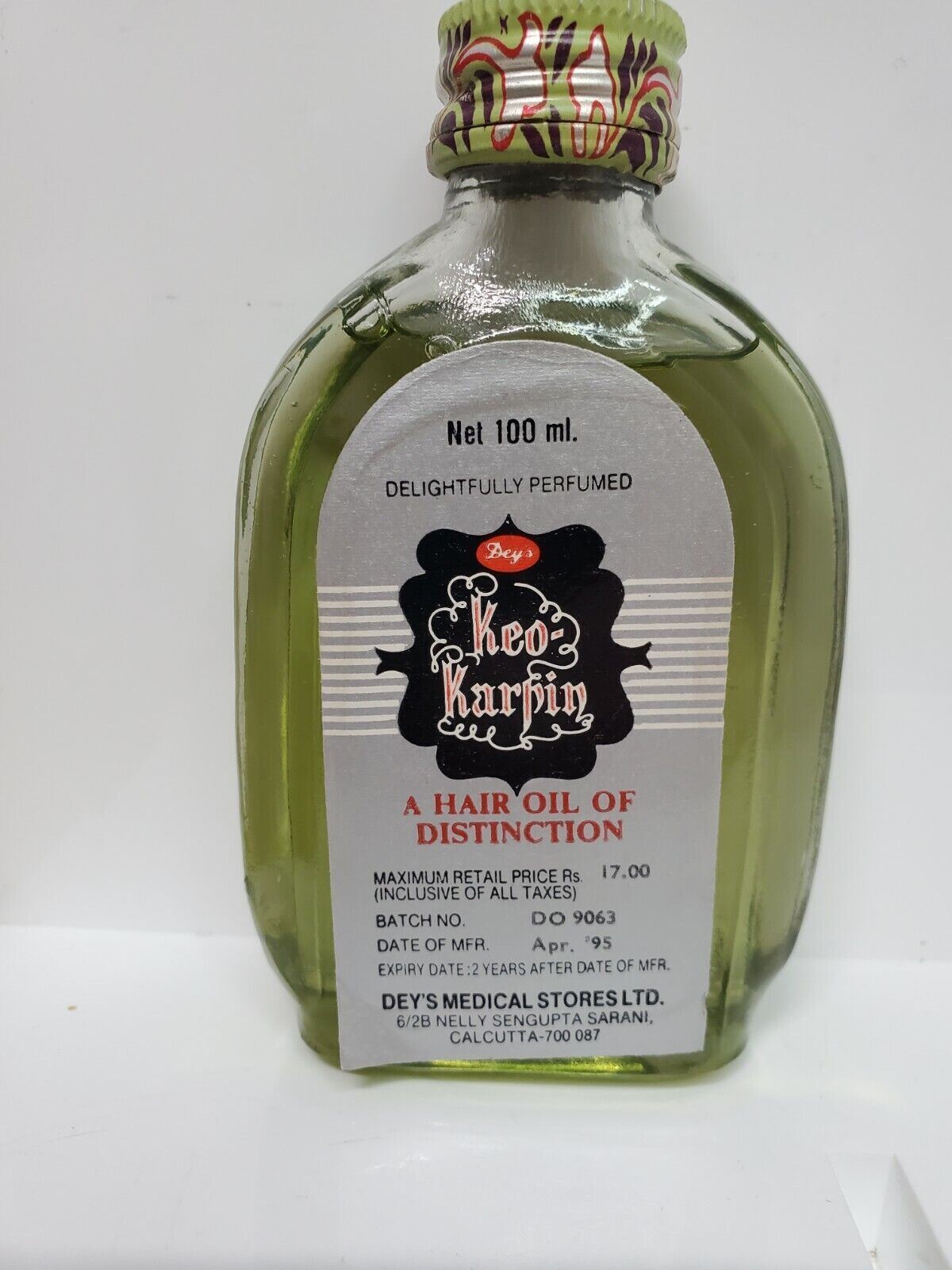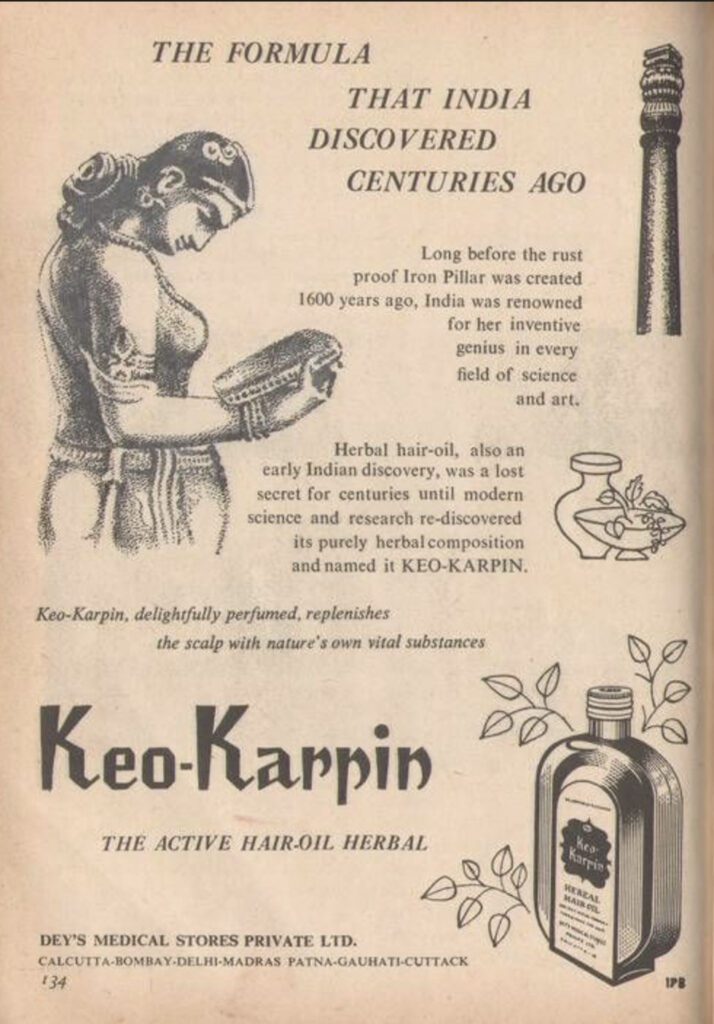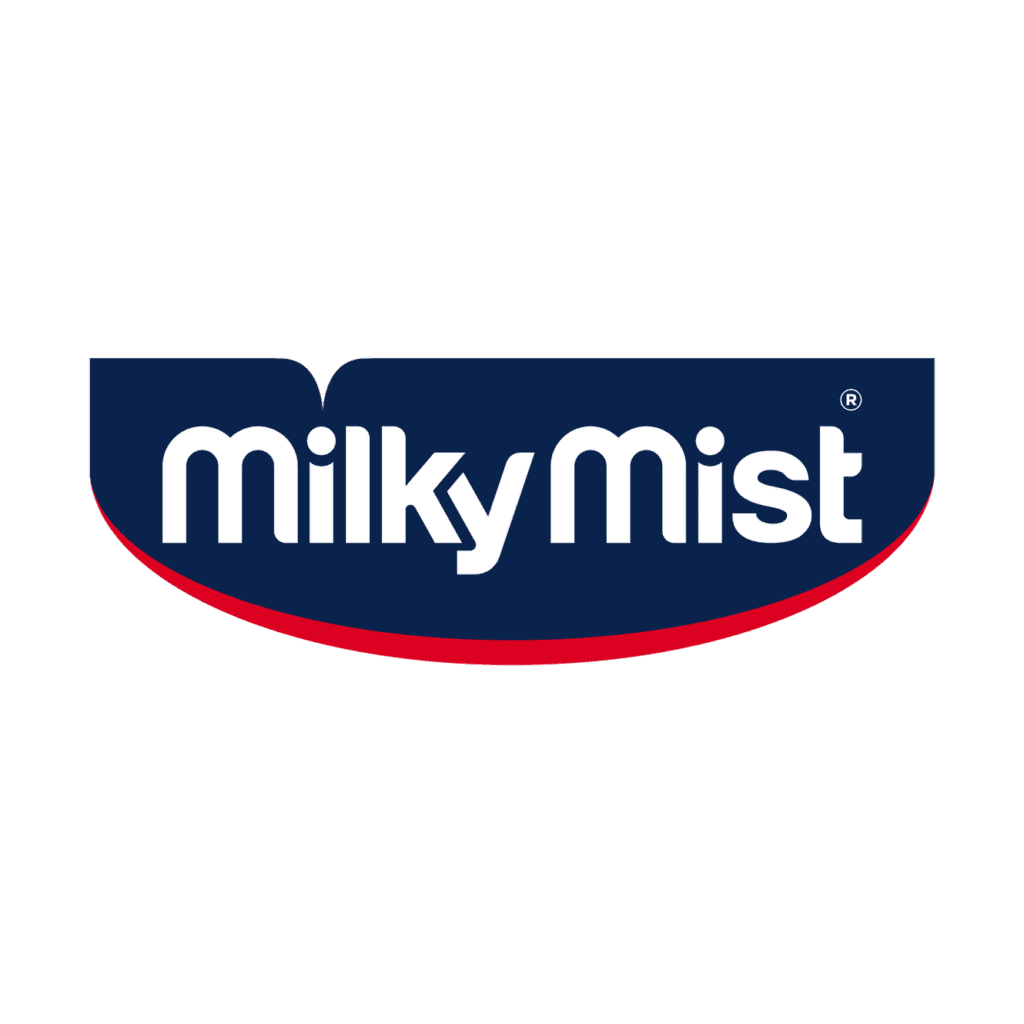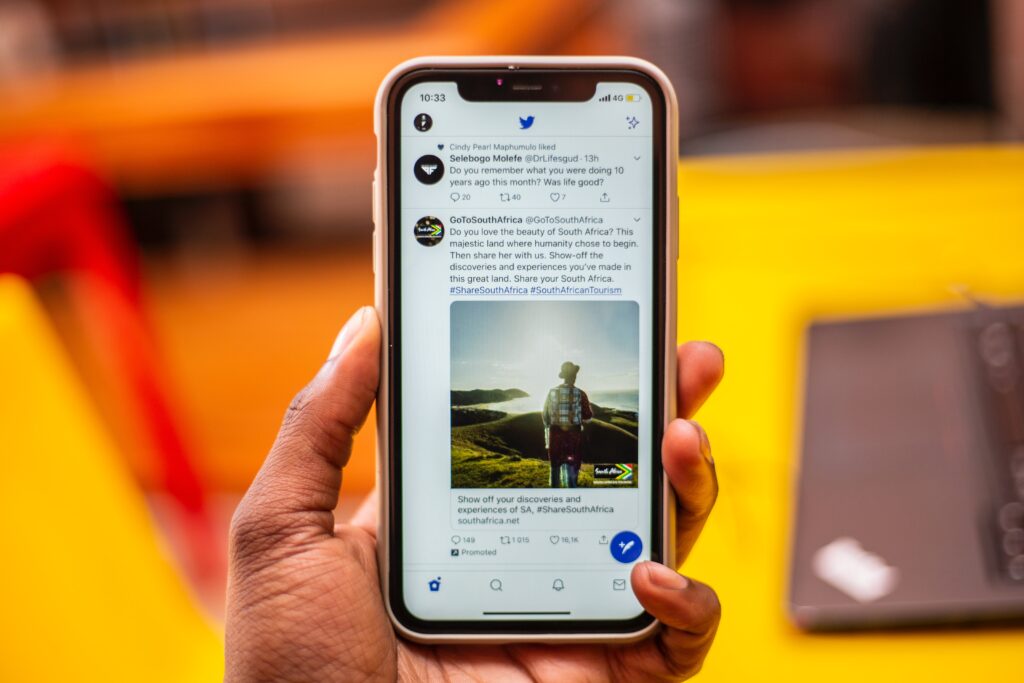Unforgotten Brands – Keo Karpin

‘Healthy oil’ is now automatically associated with the Keo Karpin and this brand has stood the test of time.
After Bengal was divided, a pre-Gandhian Swadeshi movement swept the country. Locals set fire to imported clothing and picketed stores that sold foreign items. Citizens were committed to sourcing domestically produced goods, and many stepped forward to help India become an industrial powerhouse.
From Kolkata, three major pharmaceutical enterprises started, thanks to the Swadeshi movement, one of which was Dey’s Medical.
In 1941, Dey’s Medical was started. While the war was raging over the world, B.N. Dey opened a tiny retail medical business in Calcutta. The people of India suffered as a result of the temporary non-availability of life-saving medications. Dey stepped forward to assist by guaranteeing a consistent supply of life-saving medications and medical equipment to treat soldiers and civilians alike. The medical community as a whole overwhelmingly embraced and endorsed it.
They started making indigenous medicines in 1957 in a factory they set up in Calcutta. Dey’s Medical operated for 20 years despite many political revolutions and the invasion of foreign brands, finally succumbing to the effects of global prices in the 1970s. They, like most other pharmaceutical firms, were forced to reduce medicine costs in 1977 when the Price Control Notice of 1970 went into effect. This hurt their bottom line and put the business in a disadvantaged position.
Dey’s had financial challenges and turned to their cosmetics line to increase profits. The spotlight was on Keo Karpin.
For the debut of Keo Karpin hair oil in 1956, Keo Karpin used the USP, ‘With strict control over raw materials and manufacturing, Keo Karpin is the healthy oil’. Keo Karpin, together with Jabakusum, had long been leaders in hair oil.
The standards by which consumers judge the quality of hair oil have evolved throughout time. In the past, women’s hair was often worn in modest plaits and buns, and the market was flooded with thick oils that were said to nourish and maintain the hair. Most of these oils were not promoted, and they were perfect for demure hairstyles. There were several brands available, but there was no clear frontrunner. In the 1980s, this need was met by Keo Karpin.
Though Keo-Karpin managed to boost profitability, the firm still couldn’t get going.
They reintroduced it, thinking that fashion-forward youth needed light, non-greasy alternatives to traditional hair oils. As a result, Keo Karpin was reintroduced as a beauty product first: a non-greasy, lightweight hair oil ideal for styling. Keo Karpin’s popularity skyrocketed thanks to his slick TV commercials and widespread airtime. Keo Karpin’s sales skyrocketed, and it became the go-to light hair oil as fads came and went and new hairdos became the norm. In 1989, sales allegedly hit Rs. 20 crore.

However, Keo Karpin faced stiff competition from other light hair oil products like Parachute in the early 1990s as customers shifted to the much cheaper coconut oils. Even while Keo Karpin retained its ‘pioneer’ label and an emotional connection to customers, Dey’s Medical adopted a new approach to promoting the drug. The product had a successful comeback thanks to an advertising campaign that highlighted the brand’s continuity throughout a young woman’s development. The product’s positioning was adjusted to emphasise its nutritional value.
Keo Karpin was even cited as an example of successful advertising for a Bengali business, with memorable slogans like “Hamesha Ready” highlighting the product’s long-lasting quality thanks to the inclusion of Vitamin E and Olive oil. Hair ka insurance karo-Roz Keo Karpin Karo was the slogan of a consumer education campaign. To increase its profile, the company has sponsored music events like “Sa Re Ga Ma Pa” and partnered with the Indian Premier League of Cricket. Keo Karpin maintained its place and quality among the many hair care products on the market by participating in participatory rural activities such as road shows and melas.
Olive oil, vitamin E, peanut oil, wheat germ oil, and mineral oil are all components of Keo Karpin. This company was a pioneer in the innovation of adding perfume to hair oils (to cover the scent of the nourishing ingredients). It’s nourishing, safeguarding, and beneficial to hair development. According to legend, it was India’s first non-greasy, non-sticky, fragrant hair oil, effectively reducing hair loss. This might be a contributing factor to the product’s unassisted recall.
‘Healthy oil’ is now automatically associated with the Keo Karpin brand name. Despite its stereotypical association with women, 42% of Keo Karpin hair oil consumers are male.
Reference
https://www.entrepreneur.com/en-in/growth-strategies/fighting-the-make-in-india-battle/289398



